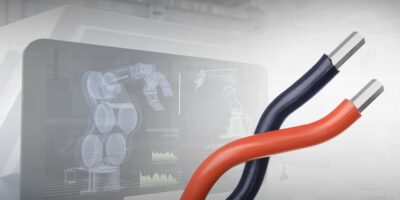SPE PHY extends reach of factory and building automation applications
Able to transmit 10Mbits per second signals up to a distance of 1.7km, Texas Instruments claims that its DP83TD510E 10BASE-T1L PHY is industry-leading in terms of range.
The single pair Ethernet (SPE) physical layer (PHY) transmits Ethernet signals through a single pair of twisted wires. The extended cable reach of the DP83TD510E is 1.5km more than the 200m requirement of the IEEE 802.3cg 10BASE-T1L single pair Ethernet specification. The additional cable length helps designers extend the reach of industrial communications without increasing system weight or cabling costs.
As they grow, factory and building automation systems need to transmit more data to and from nodes at the network edge. The ability to directly access edge-node applications can improve control and status monitoring while also streamlining data sharing between networked systems, explains Texas Instruments.
The typical methodology to bring connectivity to edge nodes is a fragmented system of multiple fieldbus protocols supported by protocol conversion through network gateways to bring connectivity to edge nodes. However, unifying networks through protocol conversion increases complexity and cost and limits the ability to remotely monitor edge-node applications.
The DP83TD510E helps designers implement a single communications network, from controller to edge node, which is capable of transmitting full-duplex data over a single pair of twisted wires. By eliminating the need for additional protocols, gateways and cables for higher bandwidth communications, designers can simplify network management, improve system control and interoperability in long distance applications, such as HVAC valve and actuator control, field transmitters and fire alarm control panels.
When upgrading to single pair Ethernet from two-wire fieldbus technologies, such as 4mA to 20mA current loops, designers can streamline network design and reduce installation costs by reusing the existing two-wire fieldbus infrastructure for data and power transmission.
The DP83TD510E is designed for use in intrinsically safe Ethernet advanced physical layer (APL) systems. Ethernet-APL is an Ethernet specification based on the IEEE 802.3.cg 10BASE-T1L standard.
A key design consideration of intrinsically safe Ethernet-APL systems is the ability to reduce Ethernet PHY power levels and temperature during system failure conditions. By supporting external termination resistors, the DP83TD510E can reduce in-rush current and maintain lower operating temperatures when used in long-distance process automation applications, such as field transmitters.
The DP83TD510E’s power consumption is less than 45mW at 1V p2p.
Pre-production versions of the DP83TD510E are available now in a 32-pin quad flat no-lead (QFN) package. It is expected to be available in volume production at the beginning of 2021. The DP83TD510E-EVM evaluation module is also available now.




